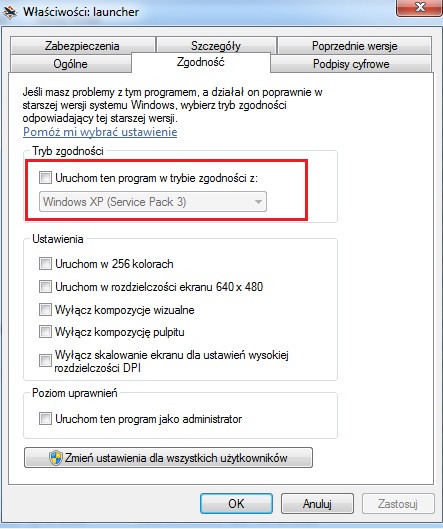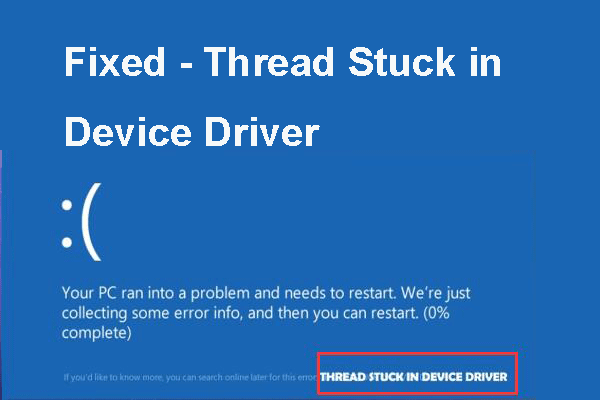
- #Thread stuck in device driver bsod install#
- #Thread stuck in device driver bsod drivers#
- #Thread stuck in device driver bsod software#
- #Thread stuck in device driver bsod windows#
Still, some color depth is lost due to the limited bitrate connection to the display.
#Thread stuck in device driver bsod software#
Software calibration improves color accuracy by adjusting the RGB values at the computer's video graphic card or operating system. The most significant disadvantage of software color calibration is that it comes at the cost of reduced color depth. A hardware calibrated monitor will be color accurate regardless of which source or computer you connect to it. If you use multiple sources with your monitor, each one must have its color calibration stored independently. With a hardware LUT, the monitor receives the unadjusted RGB signal from the computer and then applies the color corrections using a chip on the display itself where the corrected values are stored.Ī software calibration LUT needs to be reloaded every time you reboot your computer and only works with that computer's video signal. A hardware LUT, which is used for hardware calibration, is stored on a dedicated chip inside the display. When using software color calibration, the LUT is stored on your computer where the color corrections are software-processed first, and the corrected RGB values are then sent to the monitor. A LUT (Lookup table) is used to calculate corrections inside the LUT, each RGB combination has a new value assigned that reflects the values specific for a monitor to display accurate colors. Once the necessary adjustments for each reference value have been calculated, they need to be stored somewhere to adjust every color that the monitor displays.

The main difference between hardware and software calibration comes at the next step of the calibration process. This process is repeated until everything falls within accepted tolerances for the monitor to be considered color accurate. Whenever differences exist, the computer performs calculations to adjust the color and sends a corrected signal to the monitor then, measurements are retaken. A specialized optical tool measures the actual colors produced by a monitor and compares them to reference values. After manufacturing, a monitor can be color calibrated by the manufacturer or the end-user.

At BenQ, we use high-precision equipment in the manufacturing process to minimize these discrepancies however, it's practically impossible to eliminate them altogether.Ĭolor calibration helps reduce the impact of those discrepancies on color performance. If you display the color cyan as defined by its RGB values on such a monitor, it will look slightly bluer than it should. For example, the blue pixels on a specific monitor could be slightly bluer than another one, even from the same brand and model. How that cyan looks on the screen is affected by several factors, but the most common is an uncalibrated screen.Īll computer monitors incorporate small variations due to the nature of manufacturing. These numeric values never change, so cyan will always be the same, but only numerically. For example, the color cyan is 100% green, 100% blue, and 0% red.
#Thread stuck in device driver bsod drivers#
The thing is: I'd like to update my drivers so I can change my GPU whenever I play a game, and it seems like the "AMD Radeon Settings Lite" cannot do it for me.Inside a computer, numerical values of red, green, and blue define all possible colors, but what we use to reproduce that color will affect the result. All that happened in a period of two days with the new computer. So, the only thing I could do to get my laptop back on running was to go back to my restore point created by Driver Booster.
#Thread stuck in device driver bsod install#
THREAD_STUCK_IN_DEVICE_DRIVER"Īfter that, I tried many things, including uninstalling the drivers using the DDU in safe mode and selecting the driver for my GPU mannually on AMD's website to install it and it didn't work. "amdkmdag.sys Advanced Micro Devices, Inc. I downloaded "who crashed" and it showed me this:

Then, when I turned it back on later and tried to open Photoshop, I got the BSOD with the "THREAD_STUCK_IN_DEVICE_DRIVER" message. It created a System Restore Point and rebooted my PC. I downloaded Driver Booster to update all drivers for me, since it's a new PC.
#Thread stuck in device driver bsod windows#
OS Version: Windows 10 Home Single Language 圆4 - Version 1903 (build 18362.267) I bought a brand new laptop with the following specs:ĬPU: AMD Ryzen 5 3500U with Radeon Vega Mobile Gfx


 0 kommentar(er)
0 kommentar(er)
